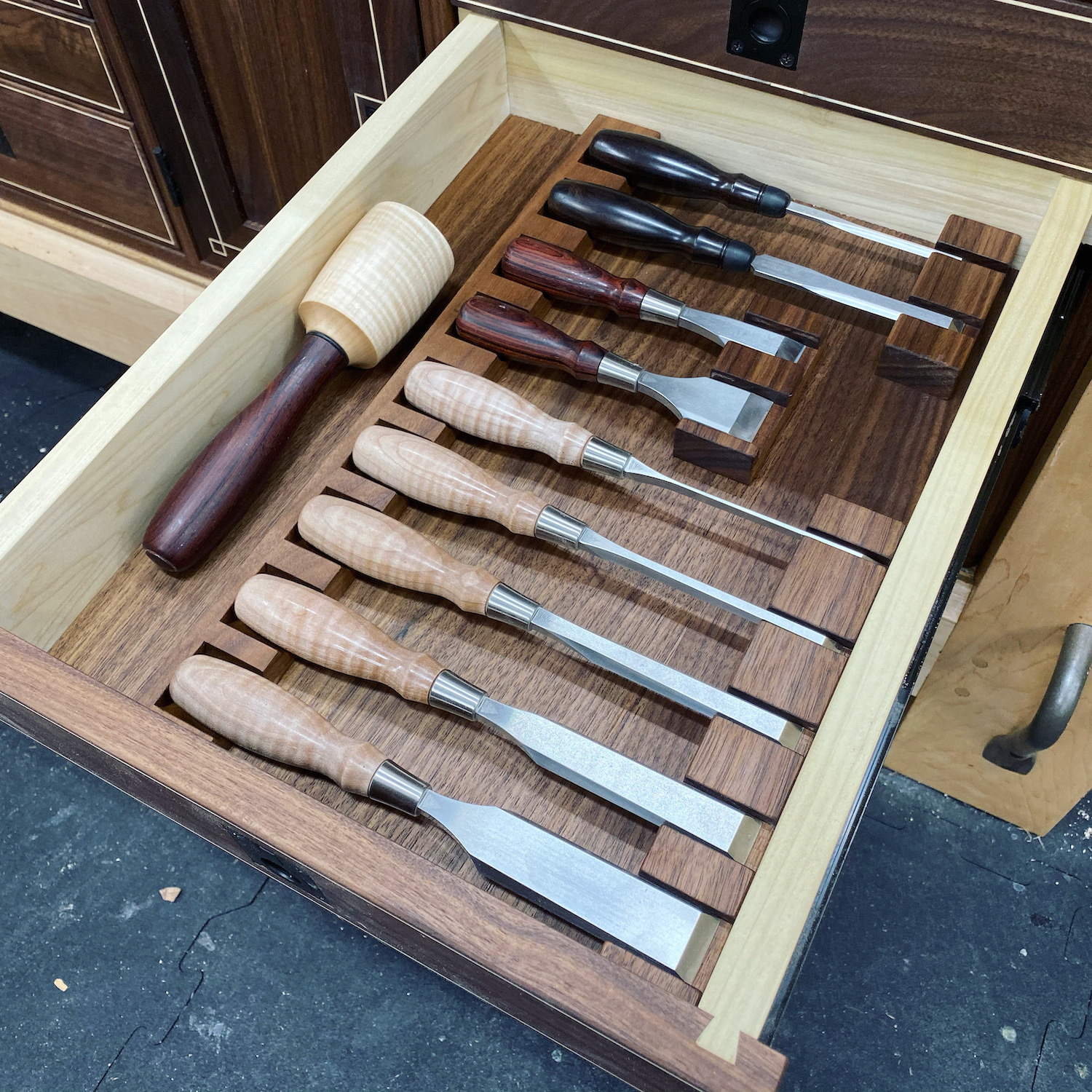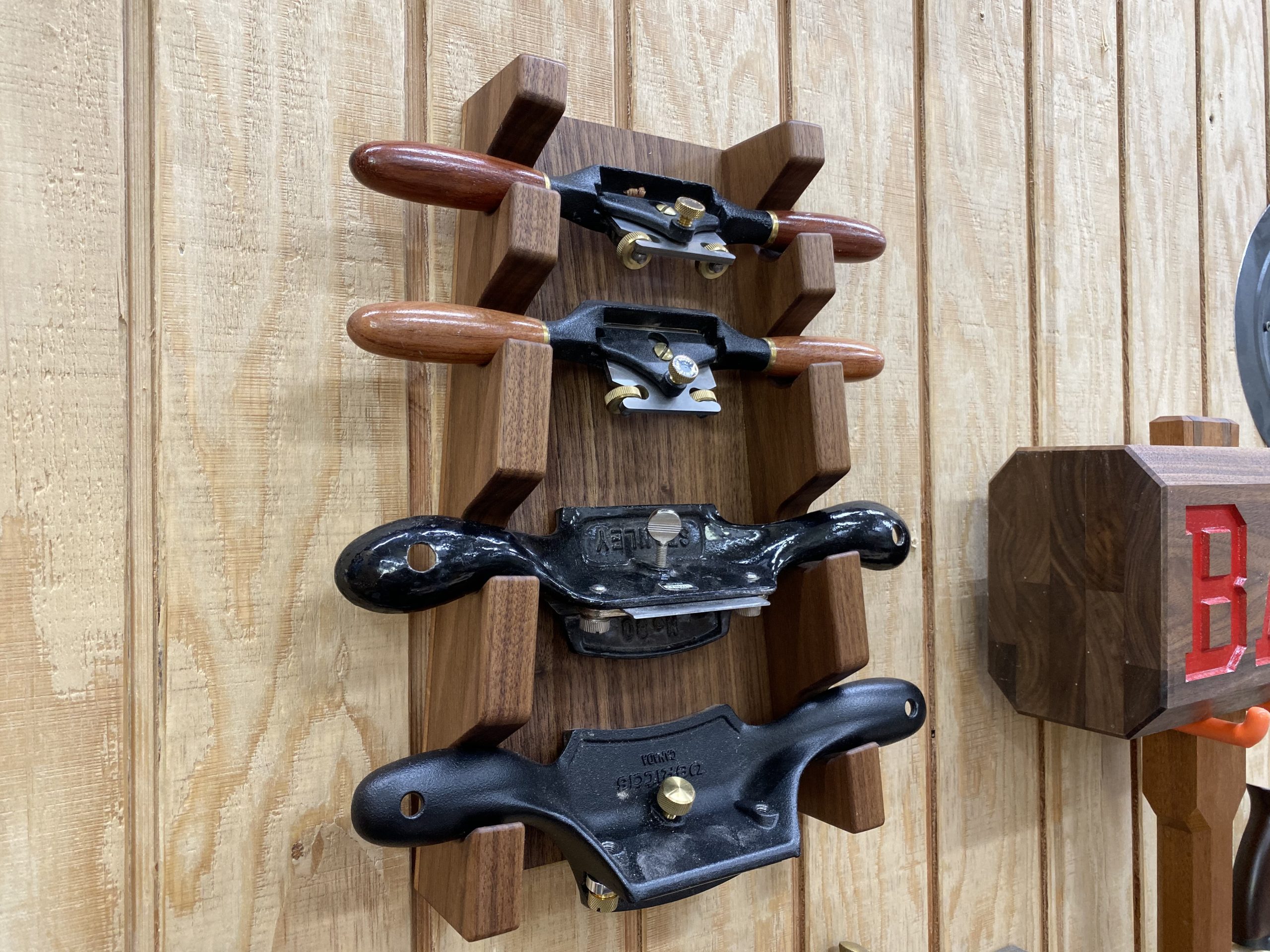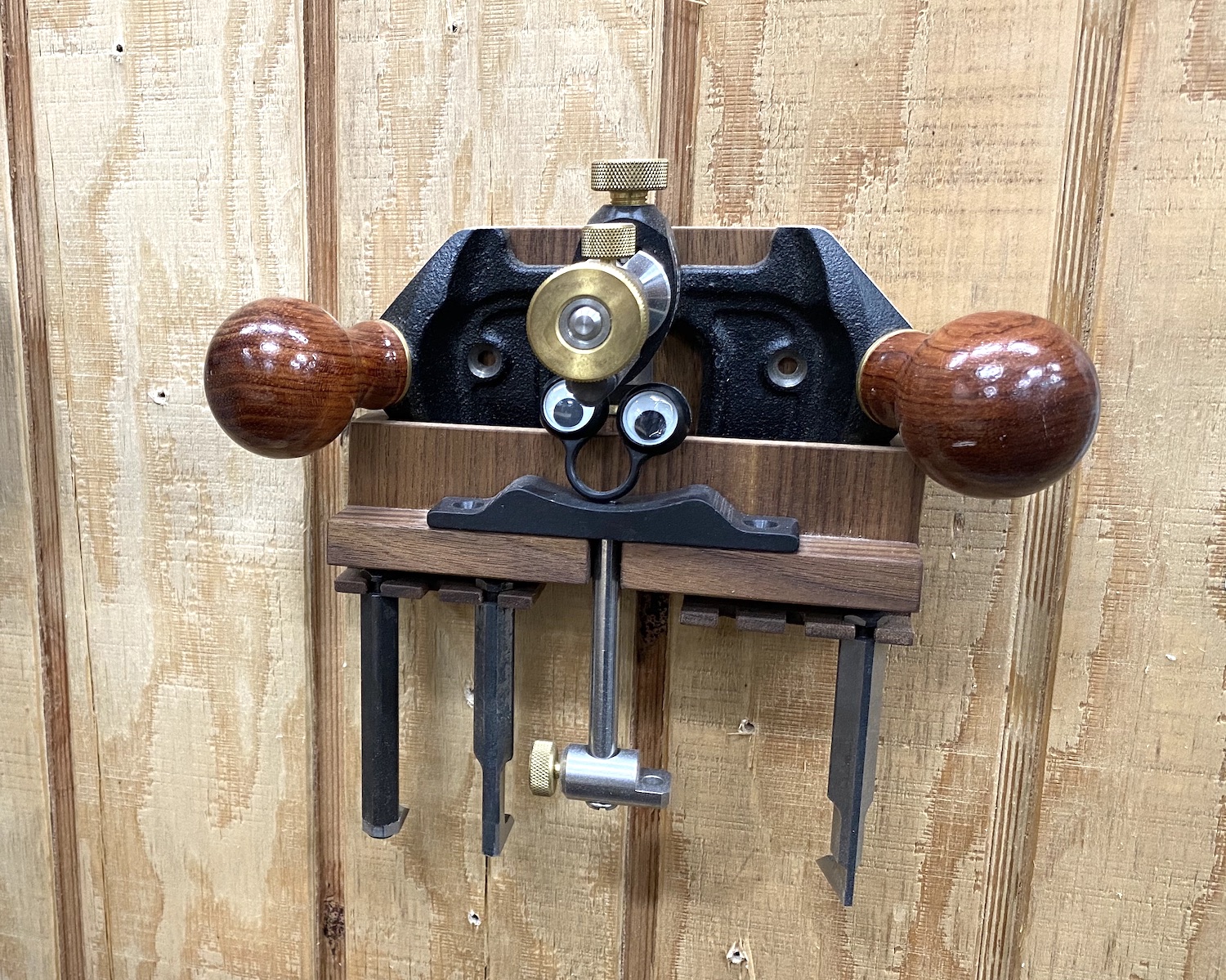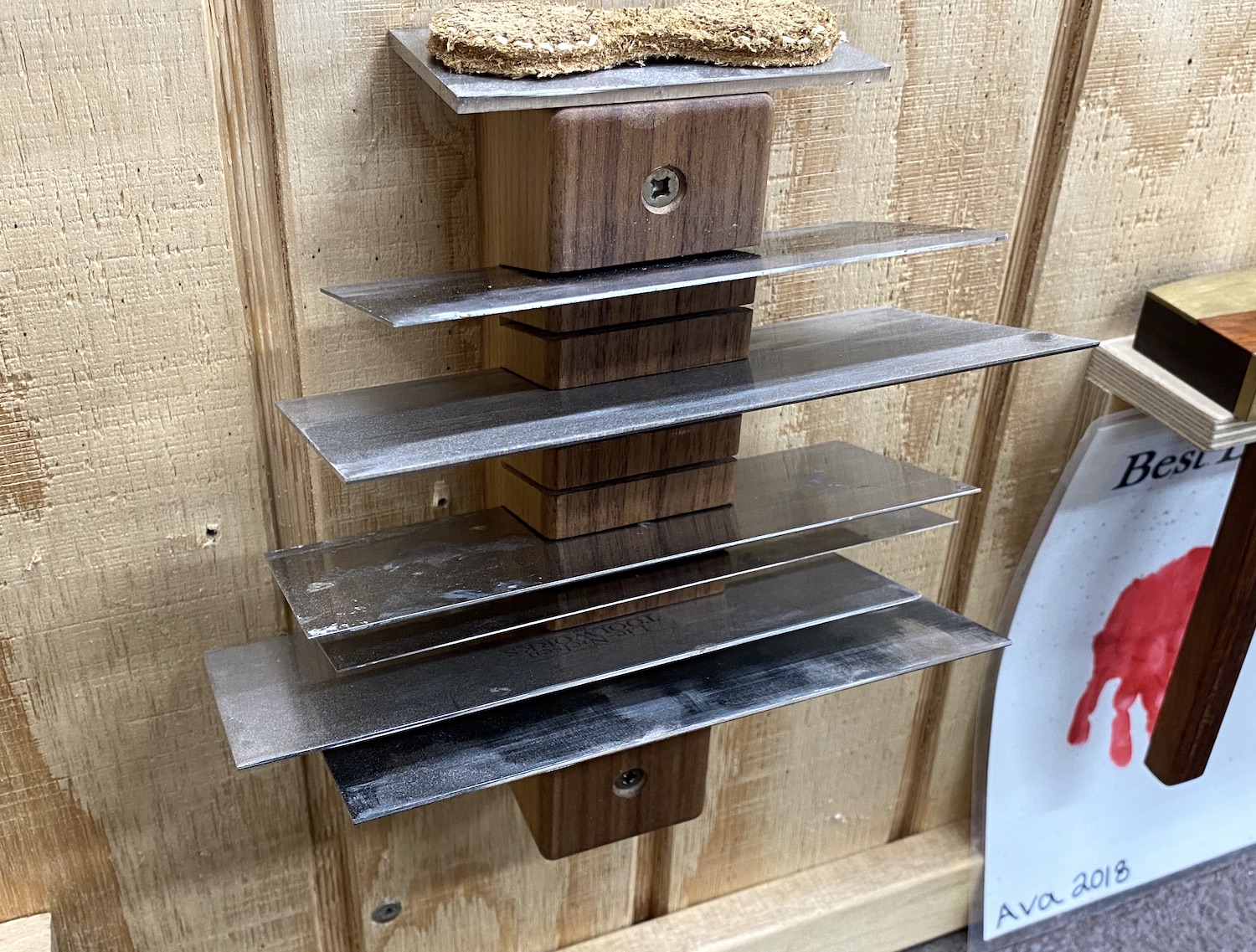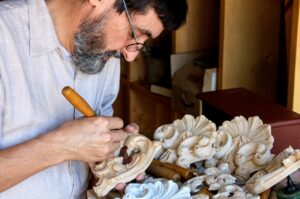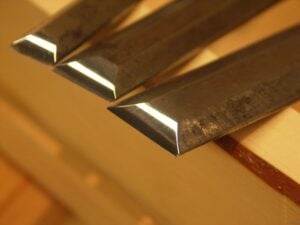LED shop lighting is a big topic of discussion these days, but that wasn’t always the case. When I selected the lighting for the Dream Shop, T8 fluorescent lights were the obvious choice. LED technology existed but was still cost prohibitive. Even two years after the build I considered retrofitting the space with LED bulbs and once again I couldn’t justify the cost. But in 2017 (five years after the initial Dream Shop build), it’s a whole different story! I’m now in a new space in Colorado and I have the opportunity to install completely new fixtures and these days it seems like LED shop lighting is really the way to go.
We’re working exclusively with American Green Lights who designed and supplied our lighting solution. The fixtures are PerformaLUX SL Series in both single strip 24 W models and 5-strip 60 W models. These units can save 50-60% compared to traditional fluorescent lights, have a lifetime of 120,000 hours, and feature a CRI of 92-95 (for color accuracy).
For my installation, the situation was pretty much ideal. I have an attic above my garage that gives full access for wiring. There was an existing light circuit already in place so all we needed to do was tap into that circuit and expand the line to the various LED shop lighting fixtures. It was still a lot of labor and took two guys all day with an extra two guys helping for a few hours in the afternoon. But it was well worth it for the finished result.
Below is a special supplemental article written by my friend Vic Hubbard, an energy consultant. He has some thoughts on LED lighting fixtures and options that you might be interested in.
I was listening to the recent discussion on lighting for the workshop on Woodtalk. While I am not what I would call an expert, I hope that I know enough to help you make some good lighting choices. With the rapid advancements in LED technology, the lighting article I wrote for The Wood Whisperer published in June, 2013 needs a facelift. The majority of the information, however, is still applicable.
What’s Changed?
Inside of the energy efficiency field, which is my day job, we knew LED was going to be a disruptive technology. Most of us have been surprised at how quickly that has happened. When the Illuminating Engineer’s Society of North America (IESNA) put forward the recommendations for new and aggressive efficacy targets for lighting that phased out the average T12, the 100 watt, and then the 60 watt incandescent, soon to be followed by the 40 watt incandescent, the LED market started to take off. Since then it has been making huge strides in both technologies associated with control of that light and efficacy, or how many lumens per watt are created.
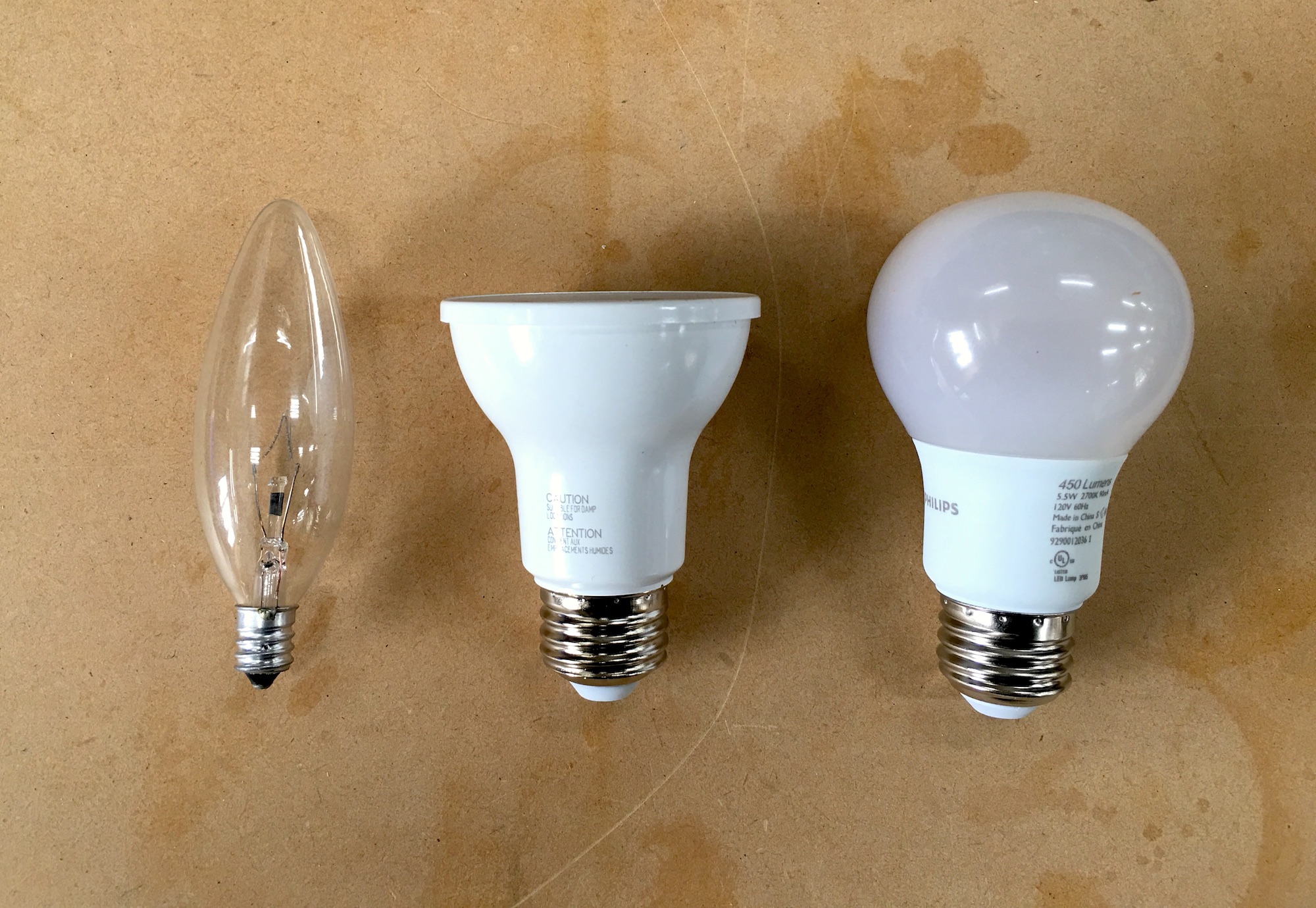 You can now buy a wide variety of LED lamps and luminaires for LED shop lighting. There are many lamps for the home, like candelabra lighting, PAR (flood lamps), and standard A19 Edison lamps (the shapes we’re all used to). Fortunately for consumers, light manufacturers continue to use the form-factors that work with the fixtures we’ve all grown up with and have become accustomed to in our homes, work environments, and other public spaces. Lamps for reading, canned lights, etc., all have maintained the same screw in base and, with few exceptions, the same familiar shape. Lots of innovation and the icing on the cake is that prices have also dropped dramatically.
You can now buy a wide variety of LED lamps and luminaires for LED shop lighting. There are many lamps for the home, like candelabra lighting, PAR (flood lamps), and standard A19 Edison lamps (the shapes we’re all used to). Fortunately for consumers, light manufacturers continue to use the form-factors that work with the fixtures we’ve all grown up with and have become accustomed to in our homes, work environments, and other public spaces. Lamps for reading, canned lights, etc., all have maintained the same screw in base and, with few exceptions, the same familiar shape. Lots of innovation and the icing on the cake is that prices have also dropped dramatically.
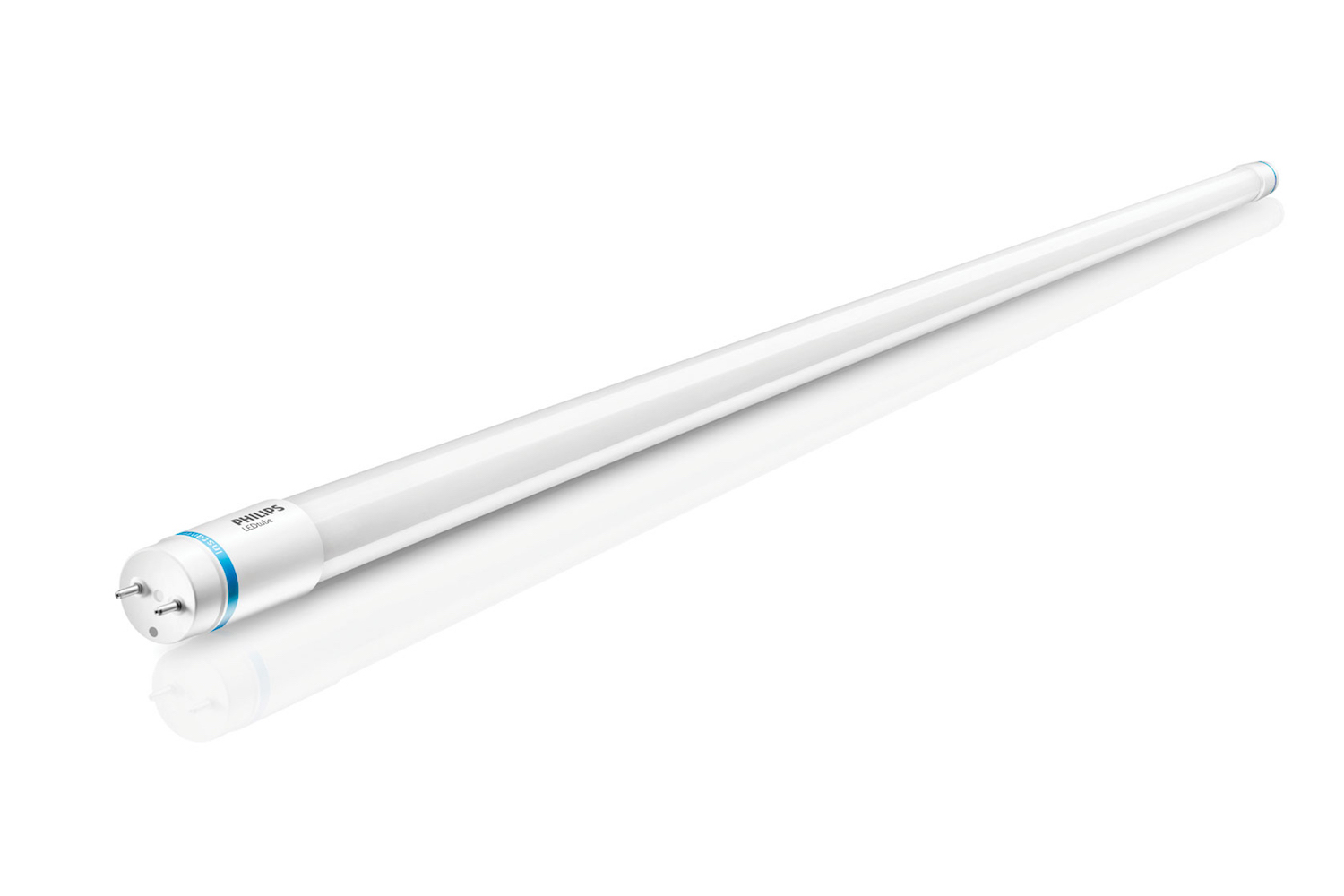 Another lamp that has been very successful in the marketplace is the tubular LED (TLED). You can find both T8 TLEDs and T5 TLEDs, the former being the most common. Not even five years ago, the payback for retrofitting a T8 fixture from fluorescent to TLEDs was beyond 35 years. The paybacks with incentives for energy efficiency are now usually between two and five years for businesses with normal 8 to 5 operation hours. Also, the quality of the TLEDs are very good.
Another lamp that has been very successful in the marketplace is the tubular LED (TLED). You can find both T8 TLEDs and T5 TLEDs, the former being the most common. Not even five years ago, the payback for retrofitting a T8 fixture from fluorescent to TLEDs was beyond 35 years. The paybacks with incentives for energy efficiency are now usually between two and five years for businesses with normal 8 to 5 operation hours. Also, the quality of the TLEDs are very good.
Things to Consider for LED Shop Lighting
If your existing fixtures are near end of life, you’re lighting a new space, or just want to jump into LED there are a few things to consider. How much light do you need? This will vary based the operations you perform in the space. You’ll want more lumens, or foot candles in areas where you do more precise or finer work and less for the general purpose areas. What color of light (Kelvin temperature) do you want? Where this was discussed in the last article, I will add that the most common color I see go into production areas is 5000 Kelvin. As I know many are getting into filming in addition to woodworking, I asked Christopher Landy, a fellow woodworker who also works in the film industry as a lighting designer, his opinion. “I shoot everything 4200, sometimes 4600 – 4800. That gives me a dynamic range of colors. If I shoot 5600, the engineers have to take the blue out and if I shoot 3200 they have to take the red out. So, when I shoot in the middle I am able to get a wider range of color.” However for his home shop he uses warm lighting, as he likes the “romantic glow” warm light gives to his basement shop.
Retrofitting
If you’re retrofitting existing fixtures, you have several options. You can go the way of the TLEDs, a retrofit kit or all new LED fixture. If you go the way of TLEDs a google search will yield a very large selection. If you want to make sure any tubular lamp is the quality listed on the specification sheet, be sure to check the Design Lights Consortium Qualified Products List (DLC QPL). If you already have a product in mind, simply enter the model number and the manufacturer in the QPL. If you don’t have an idea which product to buy, you can use this list to find a make and model. There are basically four types of TLEDs to consider. “Plug and play” (UL type A) will run off most existing T8 and some T12 ballasts and you simply replace the lamps. Ballast compatibility must be verified and running through a ballast typically will draw at least a couple more watts per lamp than the watts on the specification sheet. Ballast-bypass/line voltage/direct wire linear LED (UL type B) requires the ballast to be removed and the line voltage wired directly to the socket, or tombstones. This may also require you to replace the sockets with either shunted or non-shunted tombstones, depending on the manufacturer’s specs. LED driver retrofit kit (UL type C), while the least common is still an option. Finally, hybrid/dual technology linear LED (UL type A&B), which can be “plug and play” or direct line voltage. For most lay persons, I would suggest “plug and play” for a retrofit. It is the most simple of all the options. However, if you’re comfortable doing electrical work or will have a qualified electrician doing the work, all the options are worth looking into. If you are happy with the amount of light you have, a simple one to one replacement will do.
New LED Shop Lighting Installation
If you’re doing new construction or need more lighting in an existing space the first thing to do is figure out what type of LED you may want to use, get the specification sheet and complete this simple calculator which will give a good ball park for the number of fixtures and the cost for running them. You’ll need to know the square footage of the shop. If the shop is broken up into more than one room, calculate your needs for each room separately. For desired foot candles, IES recommends 20 – 50 foot candles for your basic shop procedures like milling and 50 – 100 foot candles for finer operations such as hand work, sanding, and finishing. I have an average of 45 foot candles in my shop and use task lighting at my work bench and a raking light for inspecting how well I’ve sanded and finished a piece. When you get to “Ballast Factor”, you will use 1.0 if you’re installing an LED fixture. If you’re using a T8 fixture and “plug and play” TLEDs, you’ll need to google the ballast to find the ballast factor. I would stick with the 0.60 for the Coefficient of Utilization if you’re using a standard T8 troffer with T8 ballasts and TLEDs. If you’re looking at LED fixtures and have white walls, and ceiling, check the specification sheet, but you’ll likely be OK using 0.80.
Other tools you may find useful. This calculation will inform you of payback, whether you’re doing a retrofit or deciding between fluorescent or LED for new construction.
***Savings per month = ((Existing System Wattage – LED System Wattage)*hours per month)/1000=kWh, kWh*Electricity Rate. Divide the cost by this number and you’ll know your simple payback period.***
I use an app in Google Play called Light Companion for determining foot candles. It is able to be calibrated, but was only off by 2 foot candles from my professional unit.
No matter which direction you go, I encourage you to purchase two to four fixtures from somewhere with a liberal return policy and hang them in place. That will let you know if you like the color, if you’re getting enough light and if you are getting shadows because the beam angle isn’t wide enough. In the case of shadows, pick a fixture or lamp with a wider beam angle or less wattage and lumen output and install more of them. Again, the calculator will be a great place to start. Good luck and have fun in the shop.
The post Upgrade to LED Shop Lighting appeared first on The Wood Whisperer.
from The Wood Whisperer https://ift.tt/31P0Hle
via
IFTTT




